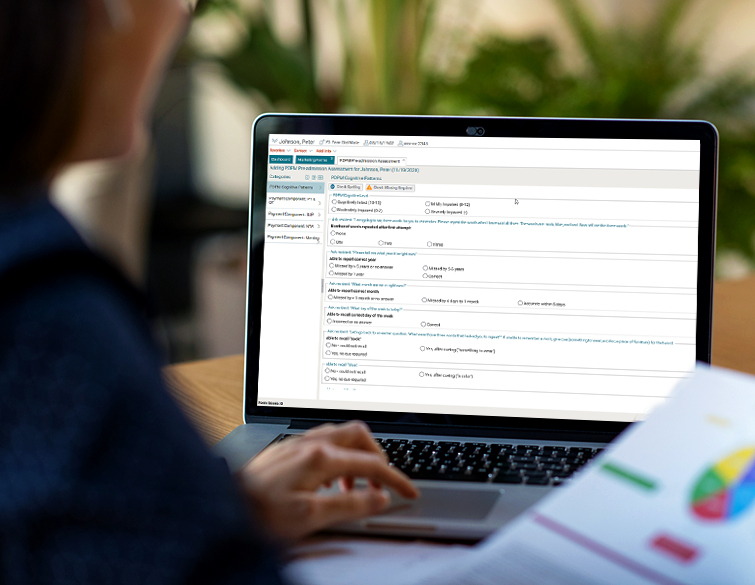
It’s no secret that technology has made life easier, faster, and more convenient. From the invention of the wheel to modern-day artificial intelligence, humans have been finding ways to use technology as a tool for progress.
We’ve seen breakthroughs in medical science, communication, and transportation that have changed our lives in unimaginable ways. In many cases these advances are so revolutionary they create entirely new industries or transform existing ones drastically.
The way we live today wouldn’t be possible without the technological advancements of recent years. Technology has enabled us to do things more efficiently than ever before – from ordering food online instead of going out or using GPS systems instead of maps when traveling – it is undeniable how much tech improved our daily life experiences by making them simpler and faster than ever before. It is amazing what can be achieved with a few clicks on your smartphone!
Every single piece of software that we’ve created has had the same goal in mind: to make people’s lives easier in one way or another. Whether it be for medic, education, or entertainment purposes, the power of technology is undeniable.
We’ve seen remarkable steps forward in all aspects of our lives thanks to software and its ability to help us accomplish things faster and more accurately than ever before.
Home care software is a great example of this trend – it allows health professionals to quickly find the right care plan for their patients while streamlining administrative tasks like billing and scheduling – making life easier not only for those providing health services but also for those who are receiving them as well.
In this article, we will take a closer look at why home care agency software has become so important in recent years and how it can be used by healthcare providers to improve patient outcomes even further.
How Does Software Even Work?
Software is essentially a set of instructions, or code, that tells a computer how to perform certain tasks. This code can range from simple commands like “print this document” to complex algorithms that control things like artificial intelligence and machine learning.
The key to understanding software is understanding the programming languages used by programmers and developers in order to create it. These languages are what give computers the power they need in order to execute our commands accurately and quickly – without them there would be no way for us humans to communicate with machines.
There are many different types of programming languages available today but some of the most popular ones include C++, Java, Python, JavaScript, Ruby on Rails, and SQL amongst others. Each language has its own strengths which makes it suited for particular tasks such as web development or creating mobile applications:
- C++:
- A versatile general-purpose language used primarily for developing desktop applications; also commonly used for embedded systems such as those found in cars & airplanes
- Java:
- Used mainly for enterprise application development but can also be useful when creating advanced GUI interfaces
- Python:
- A powerful scripting language often employed when dealing with data analysis & scientific computing projects
- JavaScript:
- Used to create dynamic web content such as animated menus, interactive forms, and other elements
- Ruby on Rails:
- Used for rapid development of web applications; often employed when creating a website from scratch
- SQL:
- A query language used for accessing & manipulating data stored in databases
In addition to these programming languages, there are also different types of software that can be created with them. These include operating systems (e.g. Windows, macOS, etc.), application software (apps), database management systems (DBMS), and more recently cloud-based services like Amazon Web Services or Google Cloud Platforms which allow developers to build complex applications without having the necessary hardware infrastructure at their disposal.
Some common examples of software include word processors such as Microsoft Word or Apple Pages; spreadsheets like Excel or Google Sheets; graphic design programs like Photoshop or SketchUp and video editing suites such as Final Cut Pro X or Adobe Premiere Pro. Here’s what a few kinds of software do:
- Word Processors:
- These allow you to create and edit documents, such as letters or reports.
- Spreadsheets:
- These allow you to manage large amounts of data in an organized way.
- Graphic Design Programs:
- Allow you to create artwork using a variety of tools and effects.
- Video Editing Suites:
- These allow you to manipulate video footage in order to achieve the desired effect.
- Database Management Systems (DBMS):
- Used for storing & manipulating data stored within databases
- Cloud Services/Platforms:
- Enable access, storage & manipulation of remote resources without having them locally installed on your computer
Software has become increasingly complex over the years with new features being added all the time – from support for virtual reality headsets like Oculus Rift or HTC Vive to artificial intelligence technology like IBM Watson or Google DeepMind – these advancements are making our lives easier than ever before!
With software now playing a major role in how we interact with technology, it’s no wonder why home care agency software is so important today — it provides healthcare practitioners with an efficient way of managing their patients’ needs which can ultimately lead to better patient outcomes overall.

Why is Home Care Software Important?
Home care software is a type of software designed to help home care providers manage and coordinate patient needs more effectively. It allows them to streamline administrative tasks such as billing and scheduling while also providing access to vital information that can be used in order to provide the highest quality of care possible. Home Care Software has become increasingly popular in recent years due to its ability to make life easier for both healthcare practitioners and patients alike.
The responsibilities of a homecare provider are vast, but some common duties include:
- Providing personal assistance with daily tasks:
- This includes helping patients with activities like bathing, dressing, and getting in and out of bed.
- Monitoring medical conditions:
- Homecare providers must be able to keep track of any changes in a patient’s condition or health status.
- Administering medications as prescribed by physicians:
- This includes giving the correct dosage at the right time and ensuring that all instructions are followed correctly.
- Coordinating appointments with other healthcare professionals:
- Homecare providers need to be able to arrange meetings between doctors, nurses, physical therapists, etc., so they can provide their patients with comprehensive care plans tailored specifically for them.
- Monitoring nutrition plans:
- It is important for home care providers to make sure that their clients are eating healthy meals on a regular basis so they can stay healthy
With the help of home care software, these tasks become much easier – it provides quick access to patient information such as medication records or appointment schedules which makes it easier for practitioners to ensure accuracy when providing services. Furthermore, this type of software also helps reduce paperwork which not only saves time but also money.
Common functions included within most home care software packages include:
- Scheduling & Billing:
- Allows practitioners to easily manage patient records, create appointment schedules, and process payments.
- Care Plans & Reports:
- Provides access to detailed information about the health needs of patients which can then be used in order to develop tailored care plans.
- Data Analytics:
- Enables healthcare practitioners to track data such as vital signs, medication dosages, or therapy progress over time so they can make more informed decisions when providing services.
- Documentation & Record Keeping:
- Helps ensure accuracy by allowing staff members to enter, store and retrieve important documentation quickly without any errors.
Home Care Software has become an invaluable tool for homecare providers – it helps them provide a better quality of care while also making life easier for their patients at the same time! Not only does this type of software streamline administrative tasks but it also provides quick access to vital information that could be used in order to save lives!
As technology continues to evolve, we are likely to see further advances that will allow us to use homecare agency software even more effectively than before — ultimately improving patient outcomes worldwide.
When a piece of software is good for both the patient and the provider, it’s easy to see why home care agency software has become so important in recent years. Home care software streamlines administrative tasks, provides access to vital patient information, and helps practitioners develop tailored plans for their patients. With the help of this type of software, healthcare providers can provide a better quality of service while also making life easier for their patients at the same time!
Understanding the Importance of Software
Software has revolutionized the way we look at healthcare today – from streamlining administrative tasks to providing quick access to vital information, software has been instrumental in improving patient outcomes across the globe. Home care agency software is a great example of this trend – it helps practitioners better manage their patient’s needs while also reducing paperwork which ultimately leads to improved outcomes overall.
With advanced features like data analytics and documentation & record keeping capabilities, home care agency software provides an invaluable tool for healthcare providers that allow them to be more effective when treating their patients.






